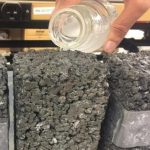Curb Allocation Change Project
|
Seattle has experienced a rapid increase in ride-hailing trips by transportation network companies (TNCs) such as Uber and Lyft. That increase has raised broad concerns about congestion, safety, and effective curb use. In response, this study evaluated a strategy of increasing passenger loading zone (PLZ) spaces to manage TNC driver stops and improve traffic flow when passengers are picked up and dropped off in the South Lake Union area of Seattle. ... Read More about Curb Allocation Change Project | |










